We’re back again with another update on the awe-inspiring world of bird migration.
Over the past week, we’ve witnessed some of the hallmarks of variable patterns birds exhibit during fall migration. High migration intensities were predominantly concentrated in the midwest and southern regions, with the midnight ET 16 October ~635 million mark highlighting the largest number of birds recorded over the contiguous US in the past week. However, in contrast to this large flight, note migration barely exceeded 110 million birds on 11-12 October, illustrating the magnitude of the dynamic nature of this marvelous phenomenon.
Looking ahead to the forthcoming nights of migration,16 October promises to continue the high migration traffic, particularly with substantial numbers of migrants winging through the southeastern US. However, the rhythm of migration undergoes a marked transformation on 17 October, as we observe significantly lower numbers of birds in transit (this is mostly due to more marginal conditions for flights in many areas as high pressure and head winds prevail in advance of a later week cold front). 18 October sees migration intensities surge a bit, with the change of weather in the center of the country.
As with the previous week’s pattern, these dynamics showcase the pulses of migration that correspond to the movements of air masses across the country, at once providing favorable conditions every few days for high intensity flights alternating with marginal and unfavorable conditions keeping more birds grounded.
Here we have the three-day forecast maps for tonight, tomorrow, and the following night.
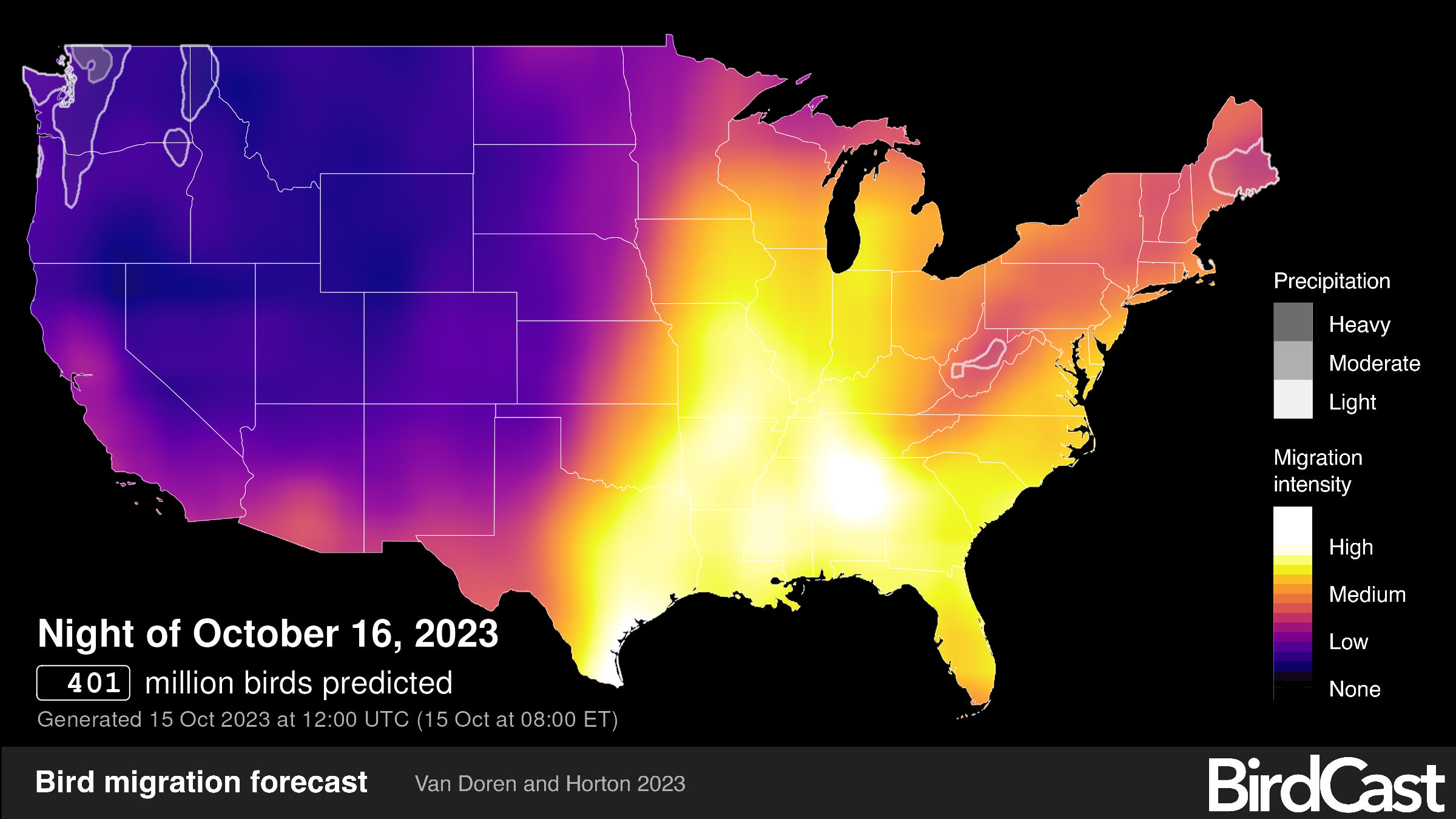
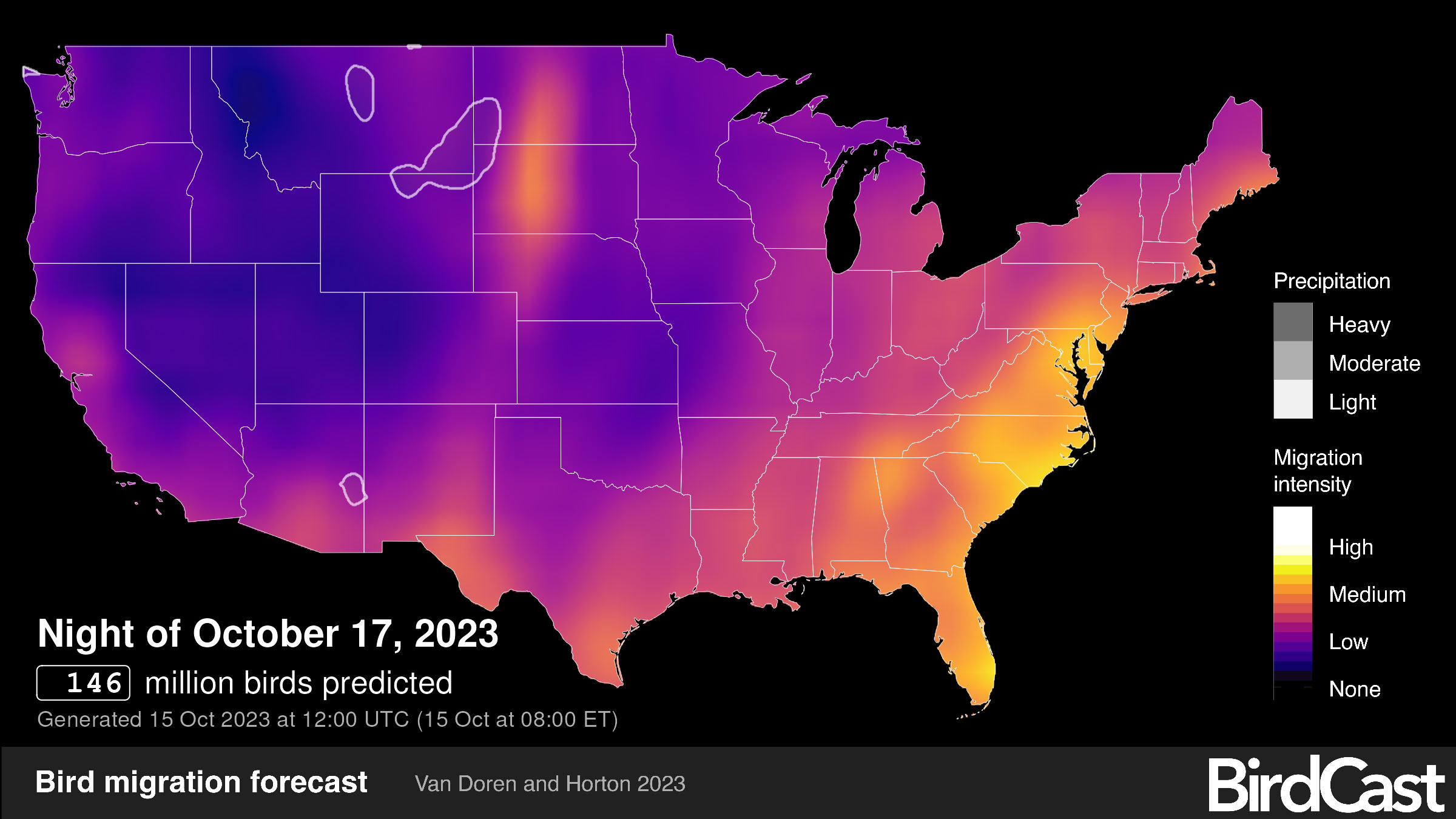

As for the CSU Lights Out Alerts, residents in the Midwest, Southeast, and Atlantic coast south of Massachusetts should be on high alert and turn off lights to safeguard migrating birds on 16-17 October. As we move into the following nights, though alerts are not pressing in terms of high intensity migration, some birds will continue to move and lights out is always the best option for helping them transit safely. Note that on 18-19 October, residents in the lower Great Plains and west Texas regions should turn off their lights to aid the migrating birds, in addition to continued value in lights out in California (in particular the Central Valley). It is crucial to stay vigilant, for even small efforts can make a world of difference for our feathered friends.
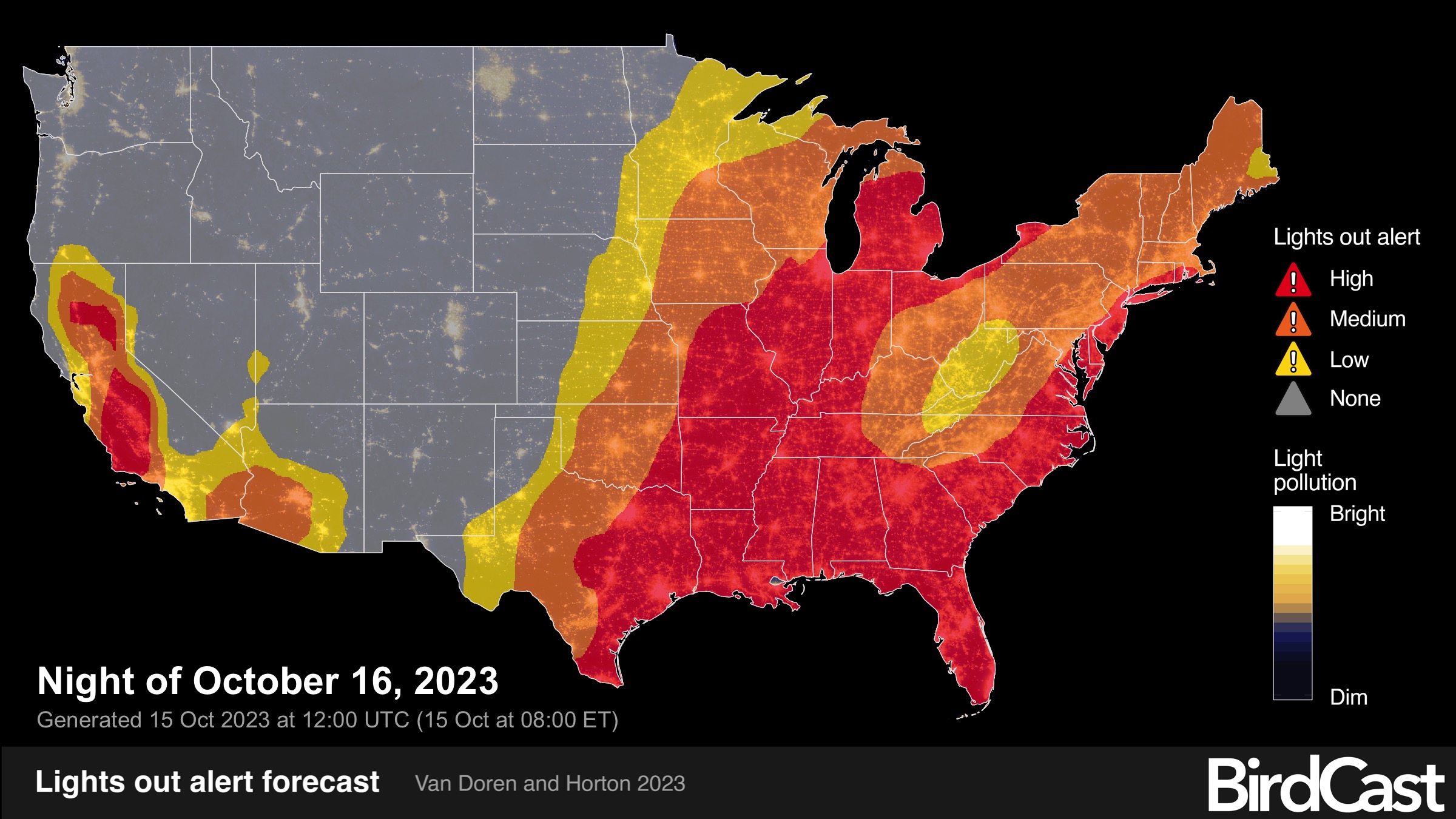
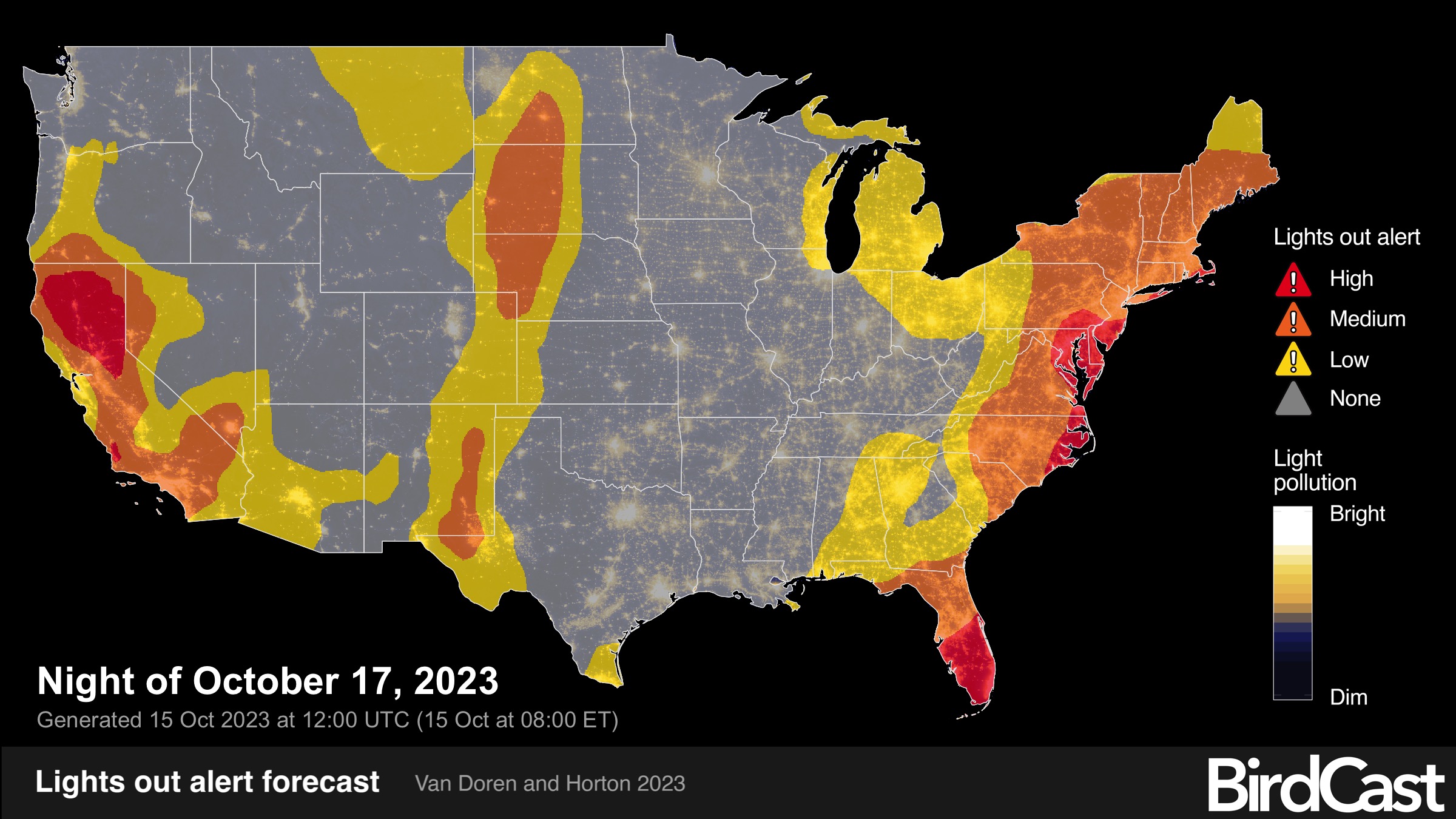
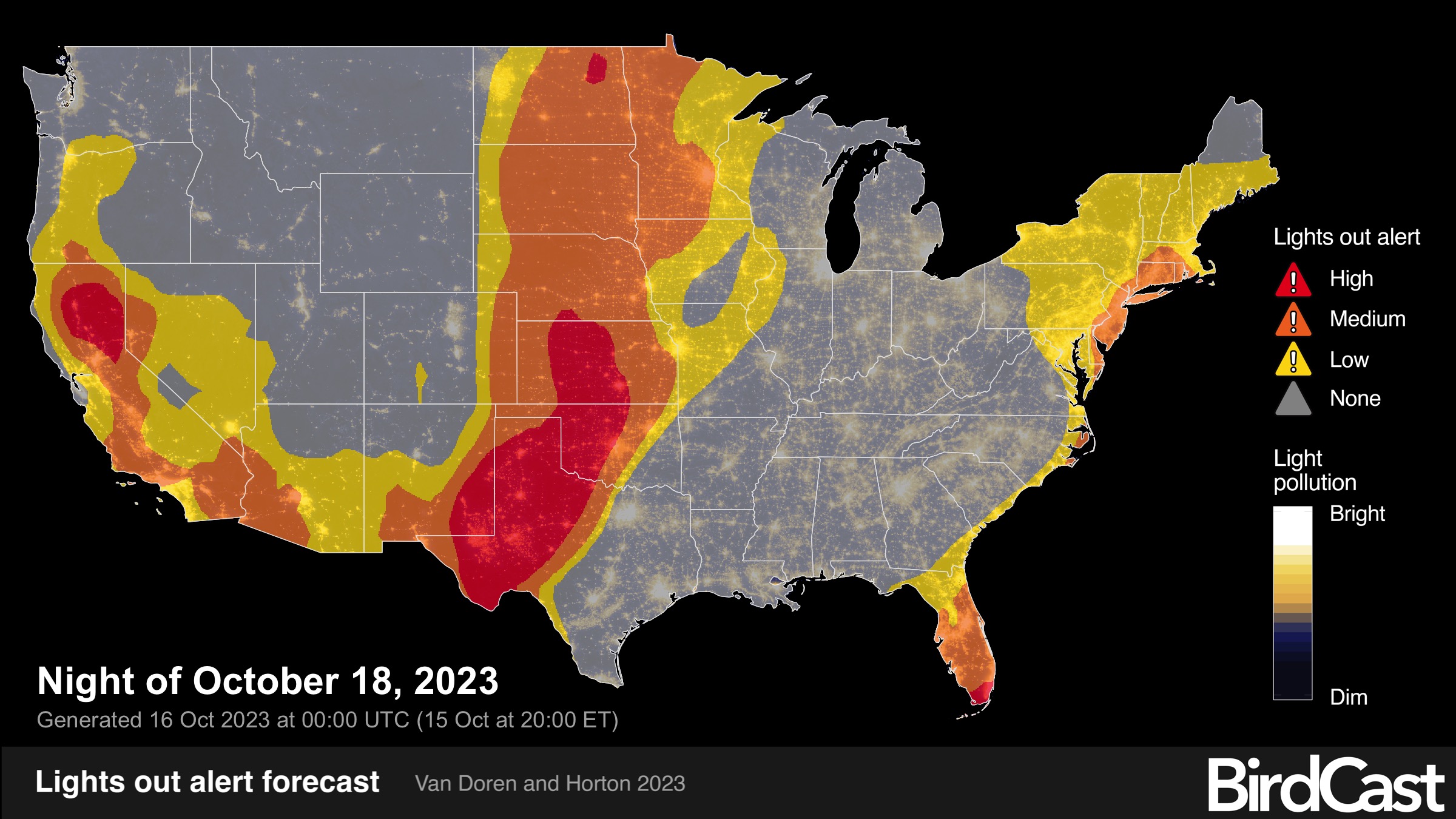
A closing note: devastating events in the past two weeks offer stark reminders of life’s fragility. Connecting to our natural worlds, especially rhythms of movement and specifically those that are easy to experience – movements of birds, can provide solace and moments for reflection. Amidst these trying times, a memory of our places in the world and our connectivity are perhaps manifest in no greater example that in the incredible journeys of migratory birds. And adopting bird-friendly practices – including turning off lights, treating glass, and supporting conservation efforts, strengthens the importance of this memory and can make a difference – one human at a time even – in the face of global challenges.
Join us as we continue to explore the patterns of bird migration we can visualize from weather surveillance radar data throughout October. And let’s take what we learn from these patterns as an opportunity to make skies safer for our winged wonders and to celebrate the incredible phenomenon of bird migration.




